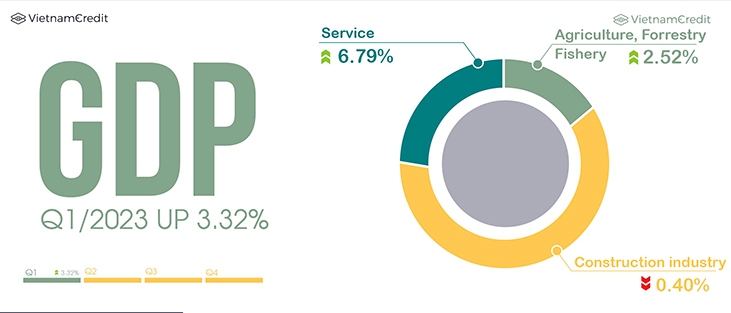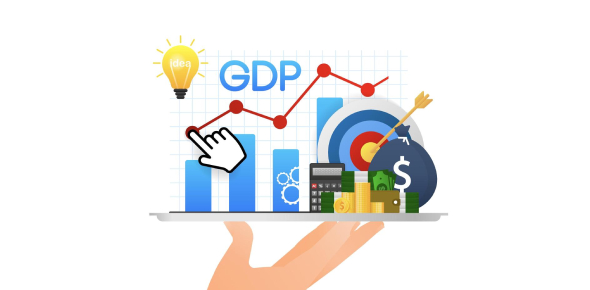
The macroeconomic landscape in Vietnam during the first quarter of 2023 showcased both positive and negative trends. While some sectors experienced growth and stability, others faced decline and challenges. This article provides an overview of the key macroeconomic indicators and highlights the sectors that displayed strong performance as well as those that showed signs of decline. Additionally, it discusses interest rates, currency movements, and the global factors that may impact Vietnam’s economy in the coming months.
I.GDP Growth Exceeds Forecasts: Strong Growth Industries

Vietnam’s GDP growth in 2022 exceeded forecasts, driven by various sectors. The agriculture, forestry, and fishery sector accounted for 11.88% of the economic structure, while industry and construction accounted for 38.26%, and the service sector accounted for 41.33%. Final consumption contributed 49.32% to overall growth, while accumulated assets contributed 22.59%. Exports of goods and services increased, and imports also saw moderate growth. Labor productivity showed a significant increase compared to the previous year.
Seasonal rice yields were satisfactory, and livestock production remained stable with well-controlled epidemics. The cultivation area for winter-spring rice matched the previous year’s level. Fishery production slightly increased, including both aquaculture and catches. Total retail sales of consumer goods and services exhibited a positive growth rate.
II.Some Sectors Show Signs of Decline
The index of industrial production (IIP) in January 2023 experienced a decline compared to the previous month and the same period last year. The processing and manufacturing industry saw a significant decrease, impacting the overall increase. The mining industry and electricity production and distribution also experienced declines.
Foreign direct investment (FDI) inflows, although historically stable, showed a decline in January 2023. Newly registered capital, adjusted capital, and contributed capital from foreign investors decreased compared to the same period in the previous year. Export turnover of goods decreased significantly, both in the domestic economic sector and the foreign-invested sector. Import turnover of goods also declined, with reductions in both the domestic economic sector and the FDI sector.
III.Interest Rates and Currencies

The US dollar experienced a decline in the global market, despite high US inflation. Domestically, the average US dollar price on the free market decreased compared to the previous month. Central banks around the world raised interest rates due to inflationary pressures. However, there were signs of easing in the tightening trend by the end of January 2023.
Looking ahead, macroeconomic stability, inflation control, targeted investments in health and education, and global factors such as the Russia-Ukraine conflict and supply chain disruptions will continue to impact Vietnam’s economy in 2023.
In conclusion, Vietnam’s macroeconomy in the first quarter of 2023 had both positive and negative indicators. It will be important for the country to address the challenges, capitalize on the areas of growth, and navigate global risks to ensure continued economic stability and progress in the coming months.
Key Points Summary:
- The first quarter of 2023 in Vietnam’s macroeconomy showcased a mix of positive and negative trends.
- GDP growth exceeded expectations, driven by sectors such as agriculture, forestry, fishery, and services.
- The industrial production index declined, particularly in processing and manufacturing, mining, and electricity production.
- Foreign direct investment inflows showed a decline in January 2023, and both export and import turnovers decreased.
- The US dollar experienced a decline in the global market, while domestically, the average US dollar price decreased.
- Central banks around the world raised interest rates, although signs of easing were observed by the end of January 2023.
- Maintaining macroeconomic stability, controlling inflation, and making targeted investments will be crucial for sustainable development in 2023.
- Global risks such as the Russia-Ukraine conflict and supply chain disruptions may continue to affect Vietnam’s economy.
If you require support or guidance in navigating Vietnam’s dynamic macroeconomy, our dedicated team is ready to assist you. Contact our Vietnam team today to access our expertise and ensure your success in the Vietnamese market.

Leave a Reply